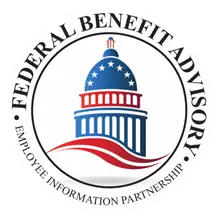Federal retirement can seem like a daunting, complicated subject at first glance—and we won’t tell you it isn’t.
There are many rules, regulations, and processes that you will encounter over the course of your retirement, and not knowing about them puts you behind the curve.
Federal Benefit Advisory, however, is here to help. We are dedicated to helping you retire comfortably and securely, and that includes keeping you informed about the federal retirement process.
Fact #1: Fill Out Form SF-3107 to Begin Your Federal Retirement.
If you’d like your retirement benefits to begin paying out on the first day of the month following your final separation from the federal agency you work for, after reviewing form SF-50, you just need to fill out form SF-3107 and submit it to your current employer’s HR department. You can also reach out to the Office of Personnel Management.
Please note that for CSRS, you will want to submit Form SF-2801. When completing the correct form, be sure you also give them at least sixty days’ notice (although it can be submitted with less time in a pinch) between the time you turn the form in and the time you plan to retire. Keep in mind, however, that there are age restrictions on federal retirement.
For example, if you have served more than five years at your federal job but less than twenty years, you must be at least 62 before retiring to receive your full FERS (Federal Employee Retirement System) or CSRS (Civil Service Retirement System) pension. If you have been there for over twenty years, you may retire at 60.
Keep in mind, however, that there are age restrictions on federal retirement. For example, if you have served more than five years at your federal job but less than twenty years, you must be at least 62 before retiring to receive your full FERS or CSRS pension. If you have been there for over twenty years, you may retire at 60.
Then, of course, those retiring due to disability may do so at any age, provided they have worked there for over eighteen months.
Fact #2: Your Year of Birth May Affect the Age at Which You Can Retire.
This is one of those facts that seems too good to be true and actually is!
With FERS, certain birth years reduce the minimum retirement age (MRA). For example, someone born after 1969 would be allowed to retire at 57 years of age (with a certain reduction in income, of course), while someone born earlier than that would be allowed to retire at an earlier age, depending on the year they were born.
Additionally, if you are a Special Provision FERS employee (air traffic controllers, firefighters, law enforcement officers, capitol police, supreme court police, nuclear materials couriers), your MRA will be even lower (age 50 with 20 years of service or any age with 25 years of service).
You can find more information on Special Provision FERS Retirement at OPM.gov on page 5 of their pamphlet.
Retiring at the minimum federal retirement age, which is MRA plus ten years, does come with some drawbacks, though, as there is a reduction in your pension for each month you are under 62 years of age. This is called the Age Reduction.
This reduction amount is five percent per year (or five-twelfths of a percent per month). However, you can avoid this drawback if you have over 30 years of service or over 20 years of service, with retirement starting at age sixty. You can also avoid this reduction by retiring early and simply postponing the beginning date of your payouts.
Fact #3: Postponing Your Annuity Requires a Separate Process.
If you want to start early retirement and postpone your federal pension while you’re at it to eliminate or reduce the Age Reduction (or for any other reason, really), just complete the application for postponed retirement, or simply contact the Office of Personnel Management.
Keep in mind, however, that you must contact the above agency more than sixty days before you’d like your FERS retirement benefits to begin paying out to allow for processing time. In doing this, you can then choose a start date that is any day between your minimum retirement age and precisely two days before your 62nd birthday.
Fact #4: Postponing Your Pension Payout Date Has Some Negative Effects.
While it may seem convenient to be able to retire early and just postpone your private pension, there can be some drawbacks to doing so. For starters, your life insurance cannot continue unless you are actively receiving your annuity.
This means that once you retire, your life insurance coverage will terminate, only to be reinstated once annuity payments begin. However, you cannot increase coverage once you are retired or reinstate any coverage that you canceled.
Additionally, your health insurance will be able to be continued temporarily and at a cost. You may continue this coverage for up to eighteen months, but first, you must contact your agency within sixty days from the date you leave and pay the entire premium, as well as a 2% fee. Once your annuity starts, you will then be able to re-enroll for your normal insurance.
Other drawbacks include similar limitations to your long-term care insurance, COLA (cost of living adjustment), and survivor benefits. Be sure to take these limitations into account when deciding whether or not to retire early and postpone your annuity.
Fact #5: Your Retirement Payments Must be Made Electronically.
This isn’t something most people think about when heading into retirement, but it is a crucial factor nonetheless.
The U.S Treasury requires that all federal benefit payments (including retirement, TSP accounts, and social security payments) must be electronic. For this reason, most retirement payments are conducted via direct deposit. If you aren’t able to accept direct deposit payments, however, don’t fret. There are other options available.
For example, you can also opt to receive your federal retirement benefits payment through a Direct Express debit card program. Using this process, the government will mail a card to you, and your pension will be automatically deposited onto the card each month.
To make your selection for which one you want to use, simply fill out section H on Form SF 3107.
Conclusion
By now, this article has taught you the various ways you can apply for retirement, as well as how to defer your payments and what penalties you might encounter in doing so.
Keep in mind, though, that federal retirement is over 100 years old, so it makes sense that the process has some tricky twists and turns. This guide, however, serves as a foundation on which you can build all of the knowledge you need for a secure retirement.
If you have any further questions or would like to get started planning your retirement today, be sure to connect with one of our planners.
We’re here to help!


